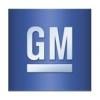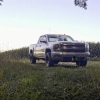99 Chevy Silverado 1500 4x4 Overheating PLEASE HELP!
-
Similar Content
-
- 2 replies
- 1,276 views
-
- 4 replies
- 778 views
-
- 1 reply
- 583 views
-
- 0 replies
- 623 views
-
transfer case 2015 GMC Sierra NQH transfer case stuck in neutral.
By Detroit Diesel,
- transfercase
- Nqh
- (and 7 more)
- 1 answer
- 1,257 views
-
-
Recently Browsing 0 members
- No registered users viewing this page.
-
Forum Statistics
247.7k
Total Topics2.6m
Total Posts -
Member Statistics
-
Who's Online 4 Members, 0 Anonymous, 898 Guests (See full list)



















Recommended Posts
Archived
This topic is now archived and is closed to further replies.